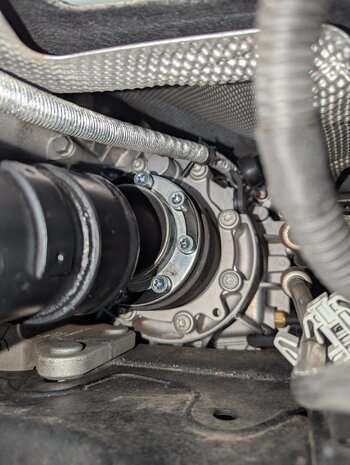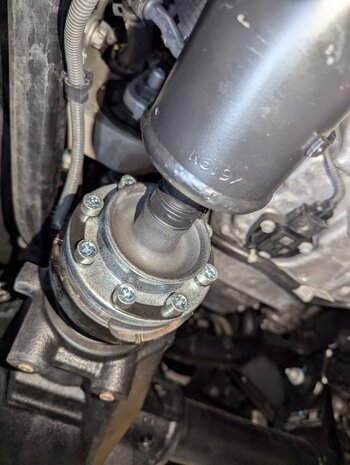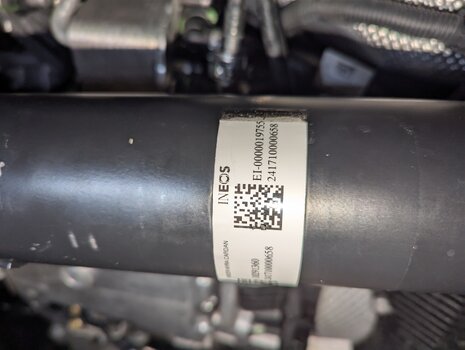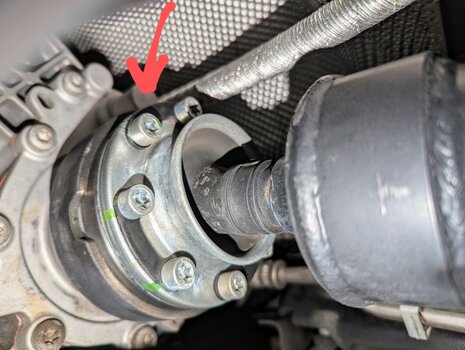Please sign me up but need to see the tangible results of the beta unit.Certainly possible it could be a single run, but I am pushing for more.
The Grenadier Forum
Register a free account today to become a member! Once signed in, you'll be able to contribute to the community by adding your own topics, posts, and connect with other members through your own private inbox! INEOS Agents, Dealers or Commercial vendors please use the contact us link at the bottom of the page.
You are using an out of date browser. It may not display this or other websites correctly.
You should upgrade or use an alternative browser.
You should upgrade or use an alternative browser.
thing is, i'll likely wear out the tires before i do a lift, as I'm waiting on a specific lift product to hit the market, and if it's one run, even if I don't end up needing it, someone sure will. it aint like I wont be able to offload it.Certainly possible it could be a single run, but I am pushing for more.
I am very interested, so please include me on the list of future customers. I have the 2.5" lift and have had no issues yet, but I think this is one of those pay a reasonable sum now, or potentially an unreasonable sum later for repairs to the driveshaft and whatever else it damages when it happens.
I’m interested. Also considering a lift.
Seems that you have a list ready for a pre-production batch but I'm for sure interested. Yet no lift but still.
!Saludos!
!Saludos!
Every one counts!Seems that you have a list ready for a pre-production batch but I'm for sure interested. Yet no lift but still.
!Saludos!
This is great you reached out Tom's. I was planning talking to him in January about if would be interested in building driveshafts. I would be interested in this. Even willing drove the my truck from Durango over to Tom's. shop.Every one counts!
I'm in. Already lifted, already had a failure and now running the Teraflex (with a new oem spare).
Does the teraflex have more angle than the stock unit?I'm in. Already lifted, already had a failure and now running the Teraflex (with a new oem spare).
NopeDoes the teraflex have more angle than the stock unit?
Does the teraflex have more angle than the stock unit?
No, but I have a suspicion the rubber boot material may be better on the TerraFlex.
That may well be true. We need to get those side by side.No, but I have a suspicion the rubber boot material may be better on the TerraFlex.
I had my front driveshaft replaced under warranty today. I reported that it was throwing CV lubricant last June at 12 months and 13,000km odo. With the agents senior tech we looked at it on their hoist. That shaft had been disturbed previously for a transfer case replacement so we agreed to clean it up and I would monitor it. It continued to throw lube from one bolt location at the TC end so it was replaced today at 18 months, 21,000km odo as a precaution.
No obvious differences in the new shaft. A standard serial item as far as I can tell.
New shaft pix
No obvious differences in the new shaft. A standard serial item as far as I can tell.
New shaft pix
Attachments
I’m beginning to think that my Grenadiers front drive shaft failure may have been caused as a result of being taken off /disturbed on various occasions inc twice to have Bowden cable replacements
Maybe the CV joint hasn’t been supported when dropping the prop shaft and so damaging the rubber gaiter
Maybe the CV joint hasn’t been supported when dropping the prop shaft and so damaging the rubber gaiter
Could be a factor for sure. The rubber boots/gaiters on the shaft that came off my vehicle today are undamaged. The lube was leaking past a bolt. Pic below. If there is a seal between the flange and the end cover then presumably it was coming past the seal. Perhaps the cover was dislodged when the shaft was dropped off the TC flangeI’m beginning to think that my Grenadiers front drive shaft failure may have been caused as a result of being taken off /disturbed on various occasions inc twice to have Bowden cable replacements
Maybe the CV joint hasn’t been supported when dropping the prop shaft and so damaging the rubber gaiter
According to my agent the old shaft gets stored onsite for a month and if IA have no further interest it gets scrapped. I want to try and claim the shaft as a backup after repairing or replacing the leaking CV. I can only ask.
Attachments
So either the gasket was damaged or the bolt hole/bolt is faulty. Should be able to diagnose.Could be a factor for sure. The rubber boots/gaiters on the shaft that came off my vehicle today are undamaged. The lube was leaking past a bolt.
Ok so a leak around the bolt where a gasket/ seal was damaged. That’s interesting. Dealers and service centres are now fully aware and checking on that when reinstalling prop shafts I trust.Could be a factor for sure. The rubber boots/gaiters on the shaft that came off my vehicle today are undamaged. The lube was leaking past a bolt. Pic below. If there is a seal between the flange and the end cover then presumably it was coming past the seal. Perhaps the cover was dislodged when the shaft was dropped off the TC flange
According to my agent the old shaft gets stored onsite for a month and if IA have no further interest it gets scrapped. I want to try and claim the shaft as a backup after repairing or replacing the leaking CV. I can only ask.
Put me on the list for a Tom Woods
And by high angle CV at the pinion end I was specifically referring to a high angle Rzeppa style joint, assuming it can be built with a stronger more high angle version than the OEM Rzeppa. A single cardan joint is not possible on the pinion end as it can not be properly aligned without unacceptable changes to the caster angle.Interesting you say that
Similar threads
- Replies
- 194
- Views
- 11K
- Replies
- 4
- Views
- 387
- Replies
- 23
- Views
- 2K







